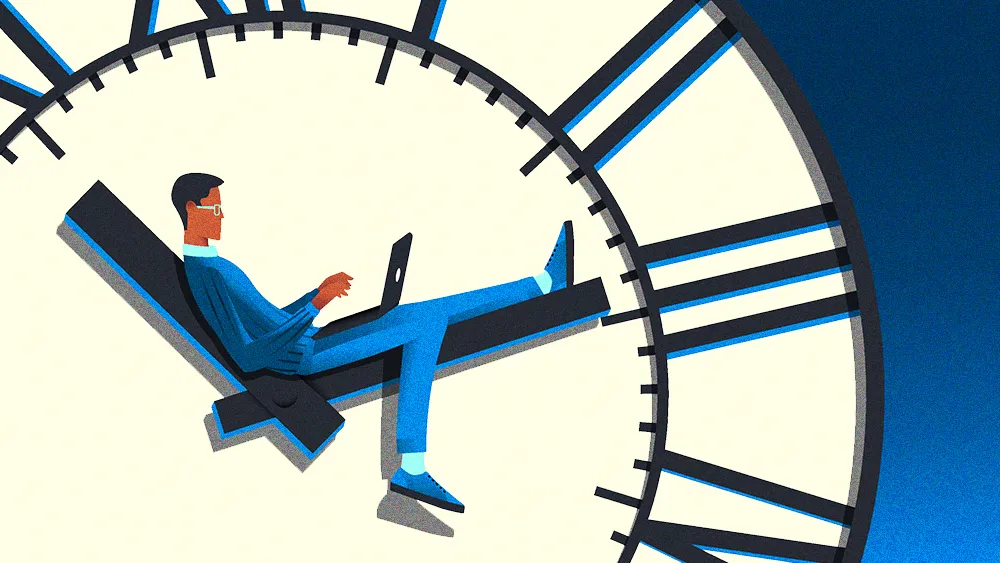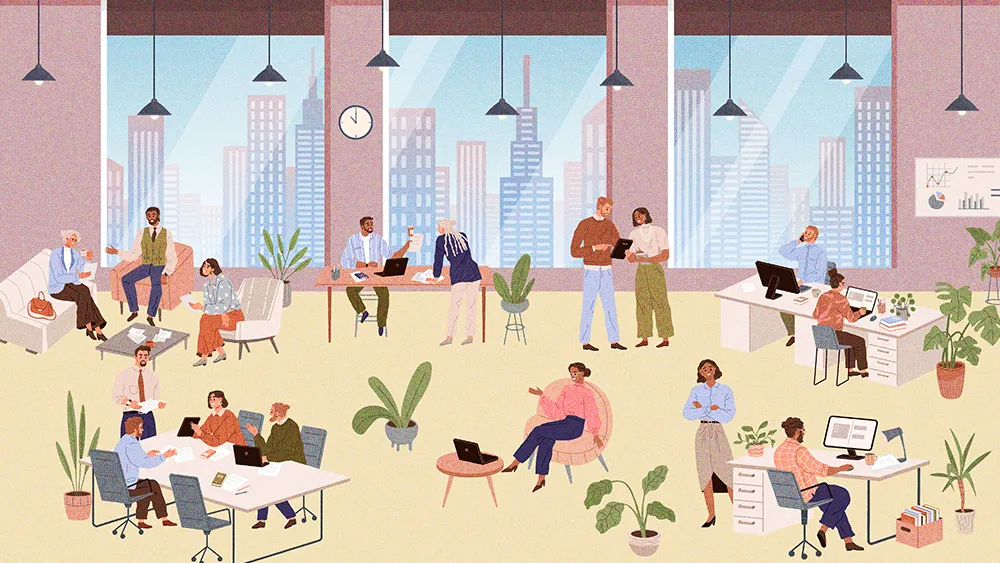Employers are replacing the once-a-year benefits cycle with ongoing employee support

Key Points
Rising healthcare costs and evolving leave laws are creating unprecedented pressure on HR leaders to adapt benefits strategies.
Gabriela Benitez advises employers to focus on pharmacy strategies to manage costs, as specialty medications become essential long-term treatments.
Companies are increasingly using claims data to implement targeted health programs, addressing chronic illnesses like diabetes.
Effective mental health support involves frequent communication, simplified access, and visible C-suite commitment to de-stigmatize care.
Companies need to evaluate their partnerships, making sure that they have strategic partners that are not just renewing 'as is' all the time, but are looking at the market and looking at options. I believe the future of employee benefits will be driven by those who are willing to say, 'Okay, that's different, but I'm willing to try.'

Gabriela Benitez
VP of Employee Benefits and D&I Partner
IMA Financial Group
HR is facing a perfect storm. Healthcare costs are surging with specialty medications now consuming up to 25% of medical premiums, and at the same time, evolving leave laws and rising employee expectations are putting unprecedented pressure on leaders. It’s clear: the traditional once-a-year approach to benefits is no longer viable.
For Gabriela Benitez, VP of Employee Benefits and D&I Partner at IMA Financial Group, it’s a new reality that requires a shift from static, transactional forms to a dynamic, ongoing partnership. “Wellness isn’t a perk anymore,” she says. “It’s a strategy.”
All about pharma: For employers, the most immediate pain point is affordability. The culprit is often a rapidly growing pharmacy spend, fueled by specialty drugs that are no longer short-term treatments but lifelong maintenance medications. To counter this, Benitez urges leaders to move their pharmacy strategy from a background consideration to a primary tool for cost control. “A pharmacy solution is key to staying both compliant and competitive,” she advises. “It helps employers control expenses and employees reduce their own costs—which is critical, because specialty medications are not going anywhere.” Whether a company is self-funded or fully insured, she notes, solutions exist to create a more sustainable pharmacy model.
Wellness in practice: Beyond cutting costs, the most forward-thinking companies are proactively investing in their workforce’s health. This means using claims data to identify high-impact areas, like diabetes or chronic illness, and then implementing targeted programs to address them.
Benitez shared a powerful story of a construction worker who nearly lost a finger while operating heavy machinery. A simple preventative care visit—a benefit he had never used—would have revealed he had high blood pressure and was pre-diabetic, conditions that directly contributed to the incident. The story is a visceral reminder that an employee’s well-being is inseparable from their performance and a company’s safety record. It’s a business case written not in spreadsheets, but in human impact.
Making mental health matter: “It’s a lot deeper than, ‘Hey, here are your employee mental health benefits. Good luck using them,'” Benitez says. “It’s more intentional, more involved.” True support, she explains, requires frequent communication, such as monthly or quarterly reminders of available resources. It demands simplifying access through tools like QR codes and simple bullet-point guides. And most importantly, it requires visible buy-in from the C-suite to de-stigmatize care and build a culture where mental health is treated as integral to productivity, not just an afterthought to check a box.
The HR juggling act: Benefits are just one piece of a rapidly expanding HR burden. From managing the bias risks of AI in hiring to keeping up with ever-changing leave laws, HR leaders are trying to juggle a dozen priorities at once. This wider context makes a proactive, strategic benefits partner essential, as they can lift a significant portion of the compliance and engagement burden, allowing internal teams to focus on the full scope of their roles.
Although the HR landscape is more complex than ever, one truth is clear: those who are willing to embrace out-of-the-box strategies, explore innovative point solutions, and leverage consortiums will stay a step ahead. In today’s environment, bold thinking isn’t optional, it’s the path forward.
It's a lot deeper than, 'Hey, here are your employee mental health benefits. Good luck using them.' It's more intentional, more involved.

Gabriela Benitez
VP of Employee Benefits and D&I Partner
IMA Financial Group
It's a lot deeper than, 'Hey, here are your employee mental health benefits. Good luck using them.' It's more intentional, more involved.

Gabriela Benitez
VP of Employee Benefits and D&I Partner
IMA Financial Group
Related articles
TL;DR
Rising healthcare costs and evolving leave laws are creating unprecedented pressure on HR leaders to adapt benefits strategies.
Gabriela Benitez advises employers to focus on pharmacy strategies to manage costs, as specialty medications become essential long-term treatments.
Companies are increasingly using claims data to implement targeted health programs, addressing chronic illnesses like diabetes.
Effective mental health support involves frequent communication, simplified access, and visible C-suite commitment to de-stigmatize care.

Gabriela Benitez
IMA Financial Group
VP of Employee Benefits and D&I Partner

VP of Employee Benefits and D&I Partner
HR is facing a perfect storm. Healthcare costs are surging with specialty medications now consuming up to 25% of medical premiums, and at the same time, evolving leave laws and rising employee expectations are putting unprecedented pressure on leaders. It’s clear: the traditional once-a-year approach to benefits is no longer viable.
For Gabriela Benitez, VP of Employee Benefits and D&I Partner at IMA Financial Group, it’s a new reality that requires a shift from static, transactional forms to a dynamic, ongoing partnership. “Wellness isn’t a perk anymore,” she says. “It’s a strategy.”
All about pharma: For employers, the most immediate pain point is affordability. The culprit is often a rapidly growing pharmacy spend, fueled by specialty drugs that are no longer short-term treatments but lifelong maintenance medications. To counter this, Benitez urges leaders to move their pharmacy strategy from a background consideration to a primary tool for cost control. “A pharmacy solution is key to staying both compliant and competitive,” she advises. “It helps employers control expenses and employees reduce their own costs—which is critical, because specialty medications are not going anywhere.” Whether a company is self-funded or fully insured, she notes, solutions exist to create a more sustainable pharmacy model.
Wellness in practice: Beyond cutting costs, the most forward-thinking companies are proactively investing in their workforce’s health. This means using claims data to identify high-impact areas, like diabetes or chronic illness, and then implementing targeted programs to address them.
Benitez shared a powerful story of a construction worker who nearly lost a finger while operating heavy machinery. A simple preventative care visit—a benefit he had never used—would have revealed he had high blood pressure and was pre-diabetic, conditions that directly contributed to the incident. The story is a visceral reminder that an employee’s well-being is inseparable from their performance and a company’s safety record. It’s a business case written not in spreadsheets, but in human impact.

Gabriela Benitez
IMA Financial Group
VP of Employee Benefits and D&I Partner

VP of Employee Benefits and D&I Partner
Making mental health matter: “It’s a lot deeper than, ‘Hey, here are your employee mental health benefits. Good luck using them,'” Benitez says. “It’s more intentional, more involved.” True support, she explains, requires frequent communication, such as monthly or quarterly reminders of available resources. It demands simplifying access through tools like QR codes and simple bullet-point guides. And most importantly, it requires visible buy-in from the C-suite to de-stigmatize care and build a culture where mental health is treated as integral to productivity, not just an afterthought to check a box.
The HR juggling act: Benefits are just one piece of a rapidly expanding HR burden. From managing the bias risks of AI in hiring to keeping up with ever-changing leave laws, HR leaders are trying to juggle a dozen priorities at once. This wider context makes a proactive, strategic benefits partner essential, as they can lift a significant portion of the compliance and engagement burden, allowing internal teams to focus on the full scope of their roles.
Although the HR landscape is more complex than ever, one truth is clear: those who are willing to embrace out-of-the-box strategies, explore innovative point solutions, and leverage consortiums will stay a step ahead. In today’s environment, bold thinking isn’t optional, it’s the path forward.




